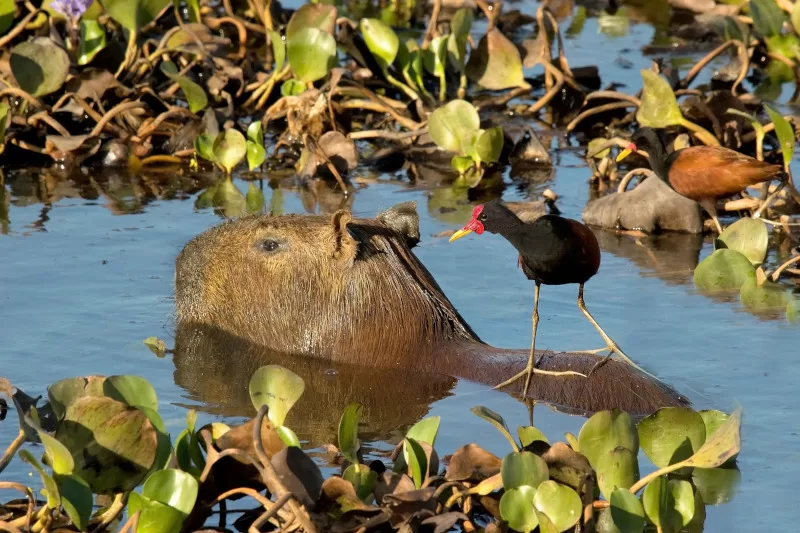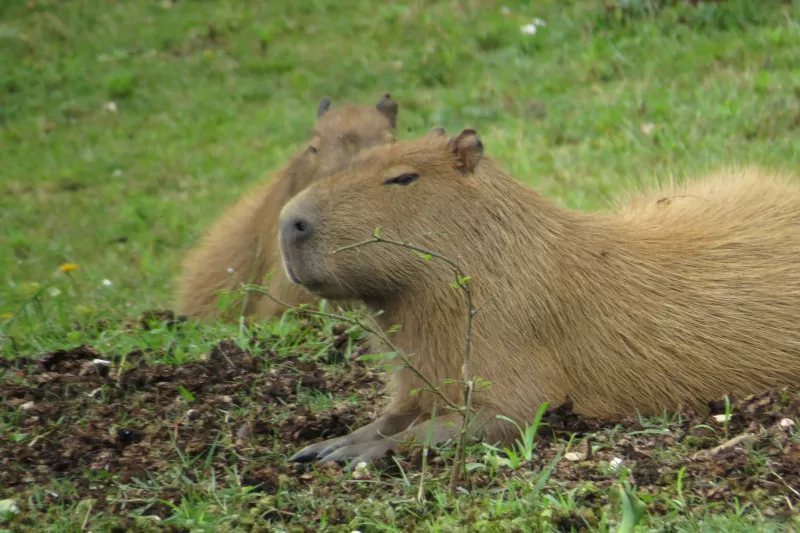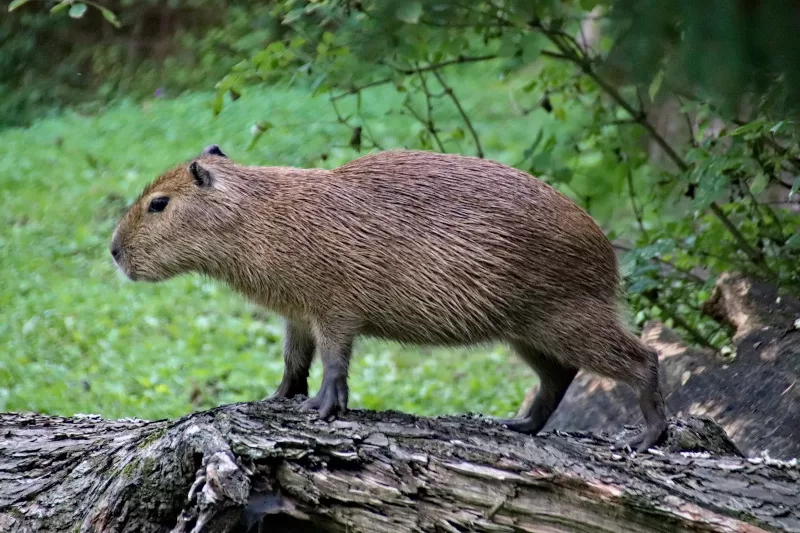Located deep in the heart of the Peruvian rainforests, the Manu National Park’s capybaras are a sight to behold. The capybara, the world’s largest rodent, thrives within this diverse ecosystem. These charismatic creatures are truly an epitome of the park’s rich wildlife.
Venturing into the park, capybaras’ social behavior captivates travelers. Visitors often see them lounging near water bodies, providing a unique spectacle. Understanding these gentle giants contributes significantly to our understanding of the biodiversity in Manu National Park.
Capybaras enjoy a lush habitat. Its dense vegetation and rich biodiversity have made this park renowned. Capybaras thrive in these conditions, basking in the warmth of the tropical climate.
Capybaras, semi-aquatic by nature, prefer living near bodies of water. They’re strong swimmers and often retreat into water to escape predators. Ponds, rivers, and wetlands within the park serve as their havens. The capybaras of Manu National Park also play a vital role in the park’s ecosystem.
Manu National Park’s biodiversity is unmatched. It provides a home for the Giant River Otter, among other unique species. These creatures, like the capybaras, add to Manu National Park’s complex food web. They highlight the delicate balance within this ecosystem.
As the world’s largest rodent, capybaras have a unique lifestyle. Their daily activities consist of grazing, swimming, and lounging in the sun. Capybaras primarily feed on grasses, aquatic plants, and fruit.
During the night, capybaras become more active. They roam in groups, displaying strong social behavior. Observing these gentle creatures provides an intriguing insight into their world. Manu National Park’s capybaras indeed symbolize the park’s vibrant wildlife.
Understanding the habitat and lifestyle of the capybara helps preserve this vital species. Conservation efforts are essential to maintain the park’s biodiversity. This understanding will foster a better appreciation for the capybaras and their role in the ecosystem.

Capybaras play a key role in the park’s diverse ecosystems. They contribute significantly to the delicate balance of life within the park. Their presence provides insights into the health of the ecosystem.
As herbivores, capybaras affect the vegetation of the park. They help control plant populations through their grazing habits. Their feeding patterns promote the growth of certain plant species over others. Manu National Park’s capybaras therefore have a strong influence on the park’s landscapes.
Manu National Park’s capybaras also serve as a crucial food source for many predators. Animals such as jaguars, pumas, and anacondas rely on capybaras for sustenance. The presence of capybaras affects these predators’ populations in the park. Consequently, they have a substantial impact on the park’s food chain dynamics.
The unique behaviors of the capybaras contribute to Manu National Park’s ecosystems. Their social structure and territorial nature influence other animal species. Capybaras shape the park’s environment through their lifestyle, making them essential animals of Manu National Park.
Capybaras also contribute to nutrient recycling. They consume plant matter, then excrete it back into the ecosystem. This process enriches the soil and promotes plant growth, fostering a healthy environment. The capybaras of Manu National Park thus play a role in maintaining the park’s biodiversity.
Capybaras have a significant role within Manu National Park. Their actions directly influence the park’s ecosystems. By understanding the role of Manu National Park’s capybaras, we can better appreciate their importance to this diverse habitat. Conservation efforts must prioritize the protection of these crucial animals.

Manu National Park hosts a thriving population of capybaras, thanks to diligent conservation efforts. Protecting these gentle giants is a priority for the park. Understanding their importance in the ecosystem has driven these initiatives.
Habitat preservation plays a crucial role in capybara conservation. By maintaining the park’s diverse ecosystems, we ensure the capybaras’ natural home stays intact. Active steps include preventing deforestation and pollution in the park.
Researchers also monitor the capybara population in Manu National Park. They collect valuable data on their behaviors, habitats, and health. These efforts help identify potential threats to the capybaras’ survival early on.
Community engagement has become an essential part of these conservation initiatives. Education programs inform the public about the capybaras and their importance in the ecosystem. These efforts inspire a deeper respect for these creatures and their habitat.
Efforts to ensure the future of capybaras in Manu National Park are ongoing. Challenges persist, but with continuous conservation work, there’s hope. We can all contribute to preserving these wonderful creatures for future generations.
A promising conservation strategy is eco-tourism. By offering sustainable travel experiences like the Manu Rainforest Tour or the Manu Amazon Tour, the park educates visitors. These tours offer a chance to see capybaras in their natural habitat.
Capybaras are not just charming animals, they’re a key part of Manu National Park’s ecosystem. Their conservation is a necessity for the park’s biodiversity. Why not contribute to their protection by taking a Manu Rainforest Tour or a Manu Amazon Tour?

If you got any questions, please do not hesitate to send us a message. We reply within 24 hours!
+51 900 394 399
info@biomanuexpeditions.com
reservas@biomanuexpeditions.com
